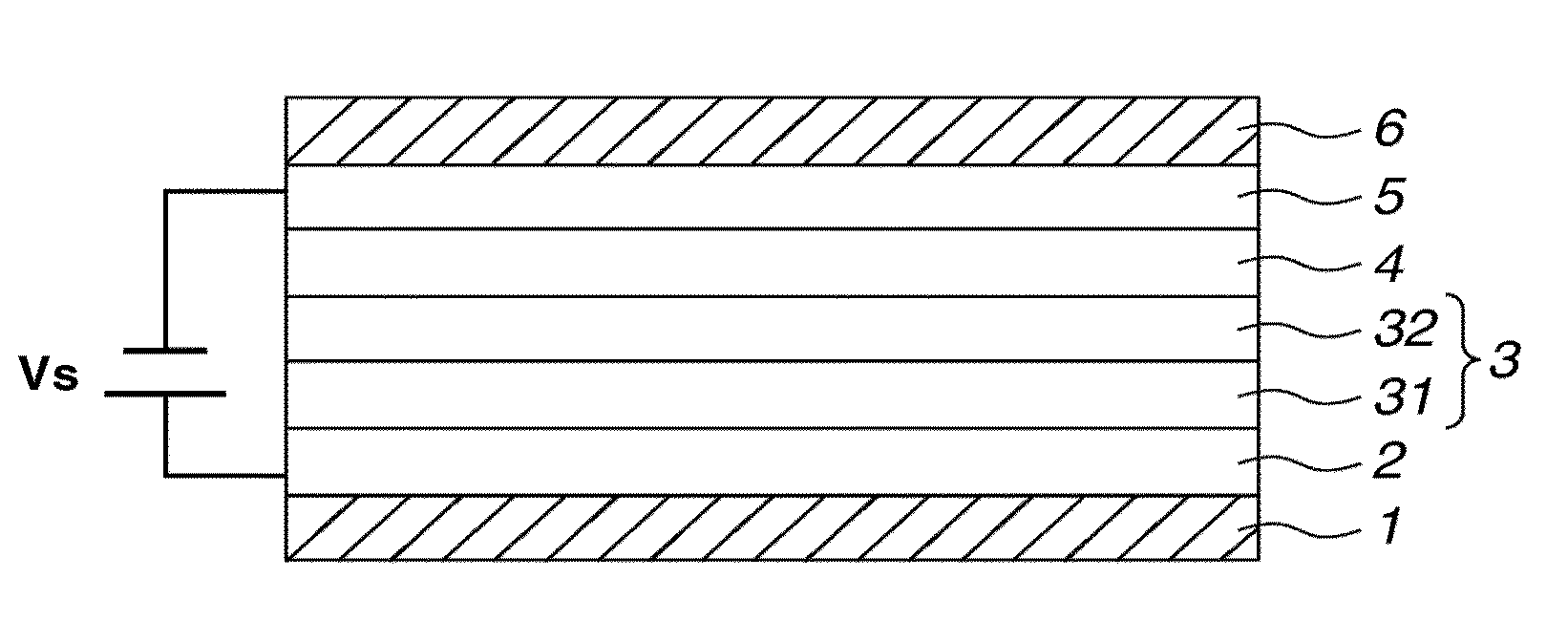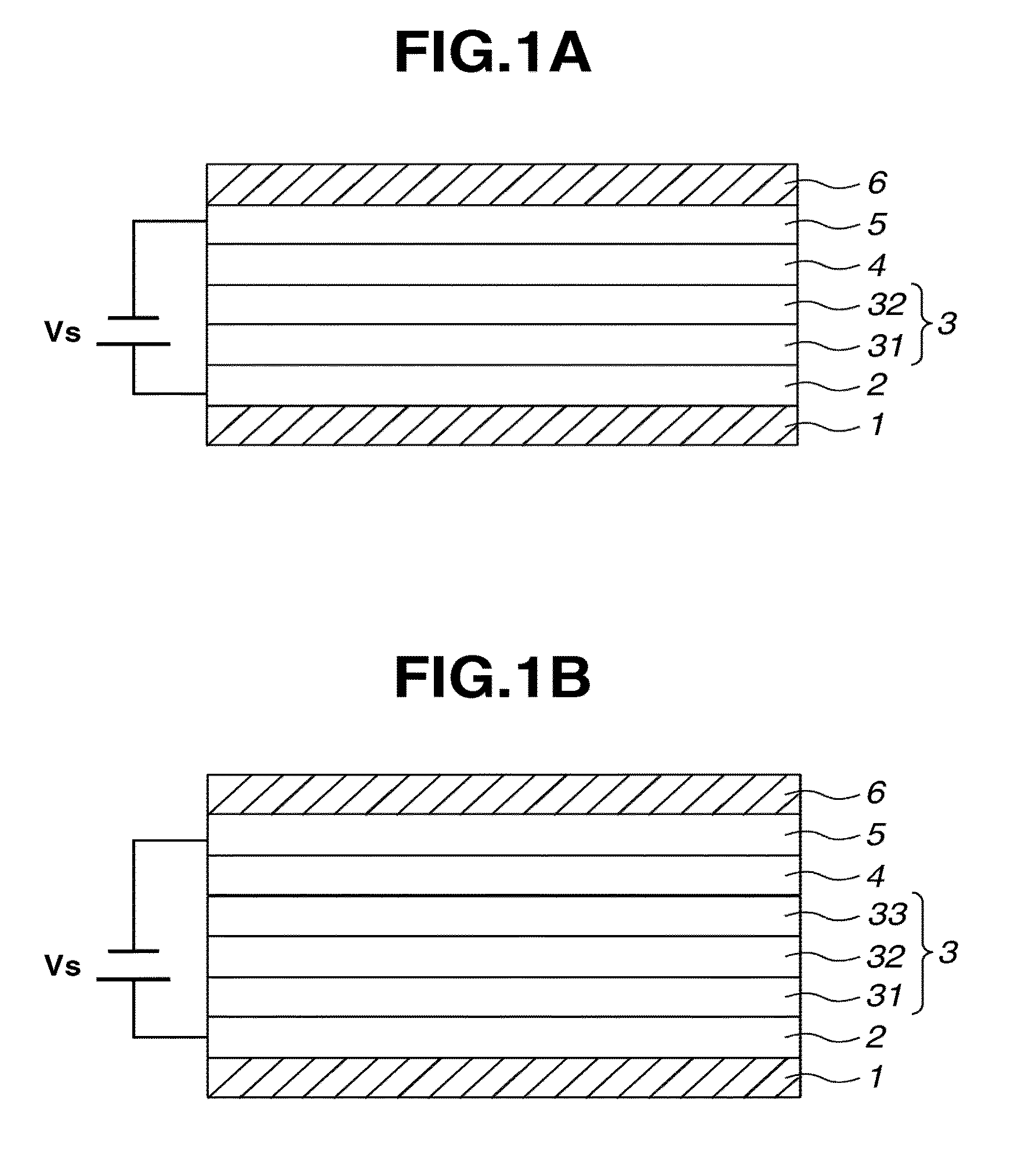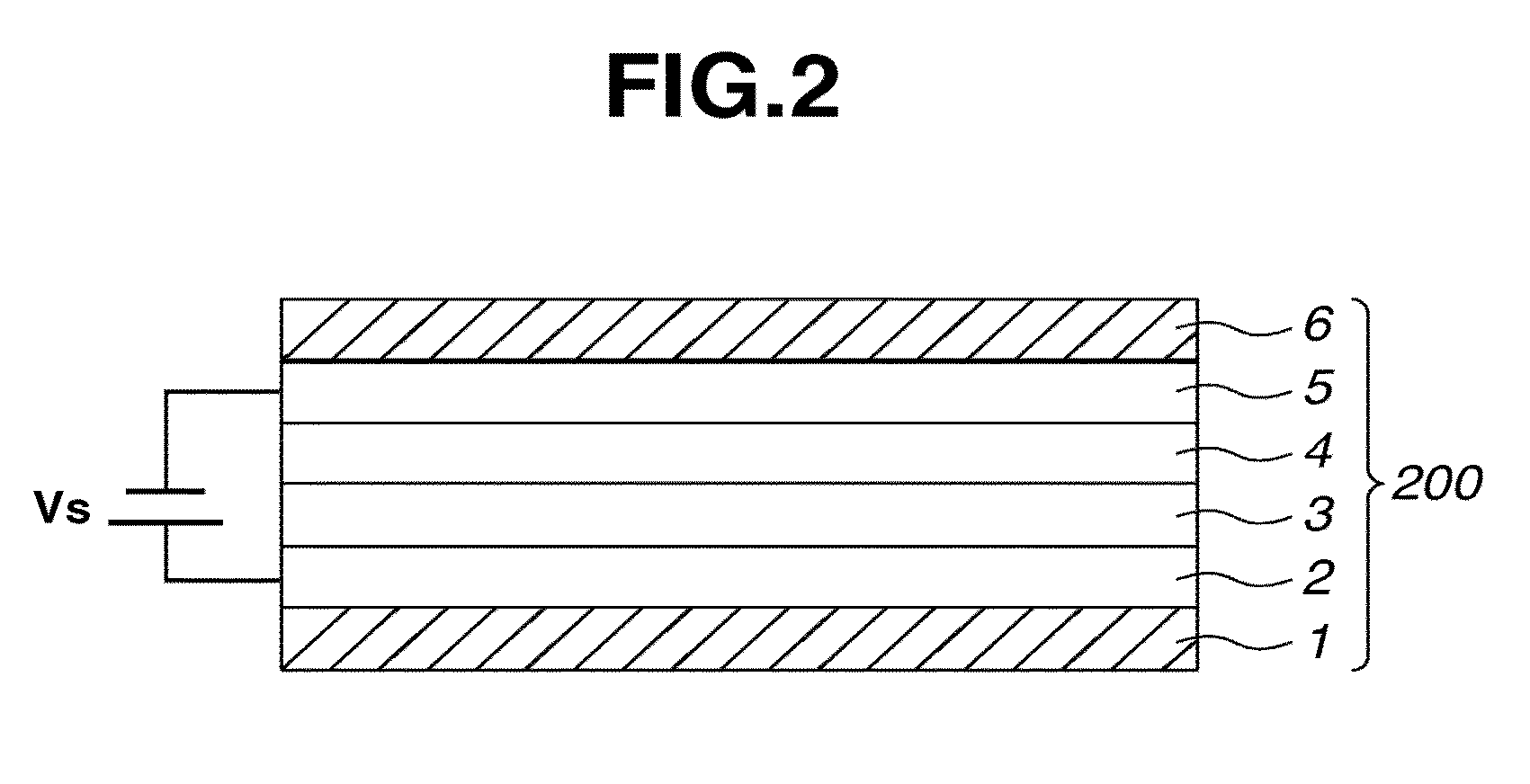Electrochromic element and method of forming same
a technology of electrochromic elements and electrochromic elements, applied in the field of electrochromic elements and methods of forming them, can solve the problems of low transmittance of visible light of a specific wavelength, difficult to make the refractive index of a layer adjacent to the electrochromic layer, and high possibility of interference of reflected light with indent light, and achieve the effect of low wavelength dependence of visible light transmittan
- Summary
- Abstract
- Description
- Claims
- Application Information
AI Technical Summary
Benefits of technology
Problems solved by technology
Method used
Image
Examples
Embodiment Construction
[0022]Various exemplary embodiments, features, and aspects of the invention will be described in detail below with reference to the drawings.
[0023]Titanium oxide is attracting attention as an electrochromic material, since its optical characteristic is less dependent on wavelength than those of tungsten oxide and indium oxide.
[0024]It is known that the refractive index of a titanium oxide layer can be controlled by controlling the density of the titanium oxide within the layer. However, finding the appropriate structure of the layer has proven to be a difficult task. An electrochromic element according to exemplary embodiments of the present invention includes a plurality of electrochromic layers, and the respective electrochromic layers are made of titanium oxide materials having different densities specifically formed so that refractive indices thereof satisfy predetermined (or desired) mathematica conditions.
[0025]The relationship between the refractive index and the density of a...
PUM
| Property | Measurement | Unit |
|---|---|---|
| wavelengths | aaaaa | aaaaa |
| wavelengths | aaaaa | aaaaa |
| refractive indices | aaaaa | aaaaa |
Abstract
Description
Claims
Application Information
 Login to View More
Login to View More - R&D
- Intellectual Property
- Life Sciences
- Materials
- Tech Scout
- Unparalleled Data Quality
- Higher Quality Content
- 60% Fewer Hallucinations
Browse by: Latest US Patents, China's latest patents, Technical Efficacy Thesaurus, Application Domain, Technology Topic, Popular Technical Reports.
© 2025 PatSnap. All rights reserved.Legal|Privacy policy|Modern Slavery Act Transparency Statement|Sitemap|About US| Contact US: help@patsnap.com



